
Polyominoes on a Multicolored Infinite Grid(in Thane Plambeck and Tomas Rokicki, eds., Barrycades and Septoku: Papers in Honor of Martin Gardner and Tom Rogers, Providence, 2020, MAA Press, Spectrum Series, v. 100, pp. 29–36), Hans Hung-Hsun Yu investigates how many colors are needed for the cells of the plane to ensure that a given polyomino has no two cells of the same color. Here I consider the corresponding problem for polyhexes.
A polyhex with k cells requires at least k colors. In the diagrams below, color counts that exactly meet this requirement appear in red.
For polyiamonds, see Polyiamond Variegation.

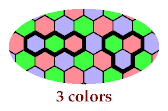
The third trihex requires four colors:
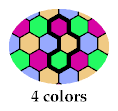
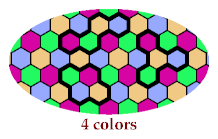
The I tetrahex requires five colors:
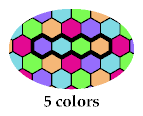
The Q and U tetrahexes require seven colors:
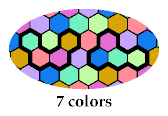
The J tetrahex requires nine colors:
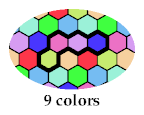
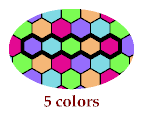
Last revised 2018-07-19.